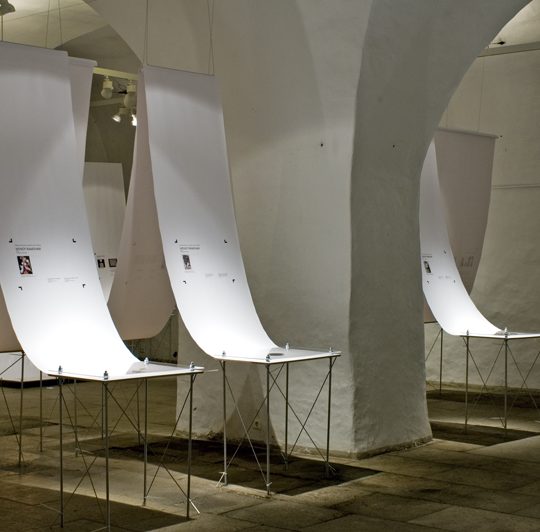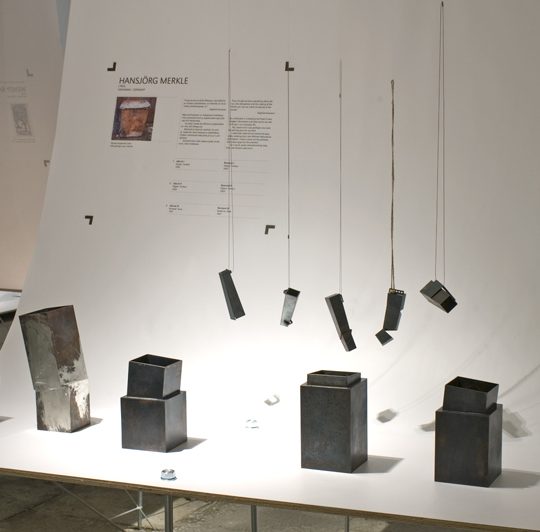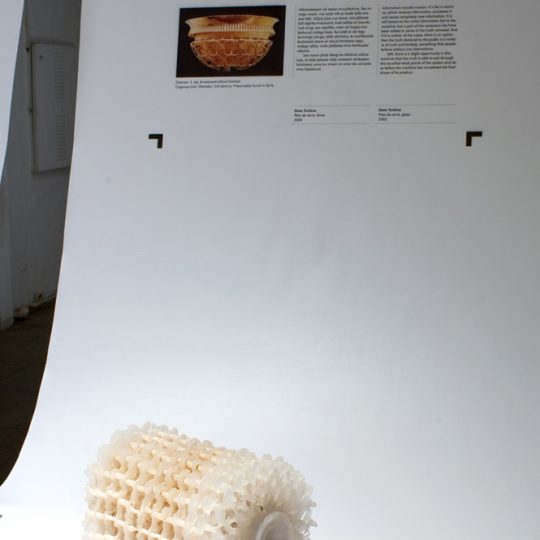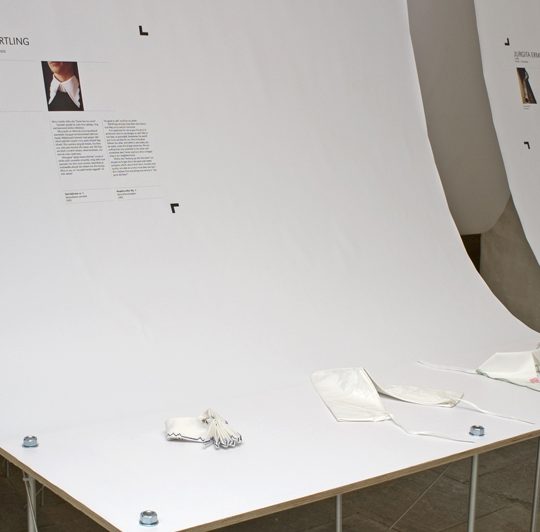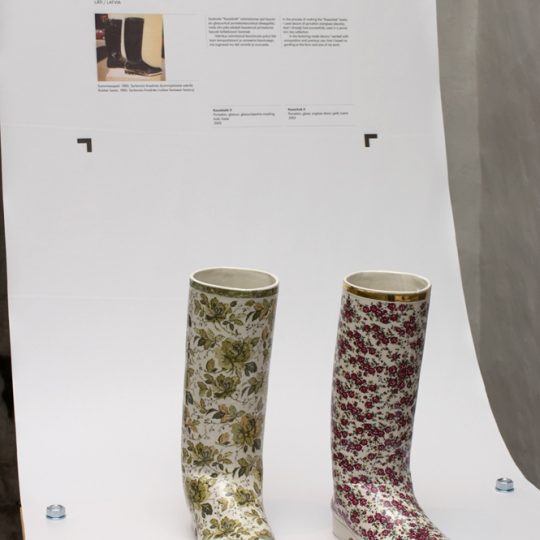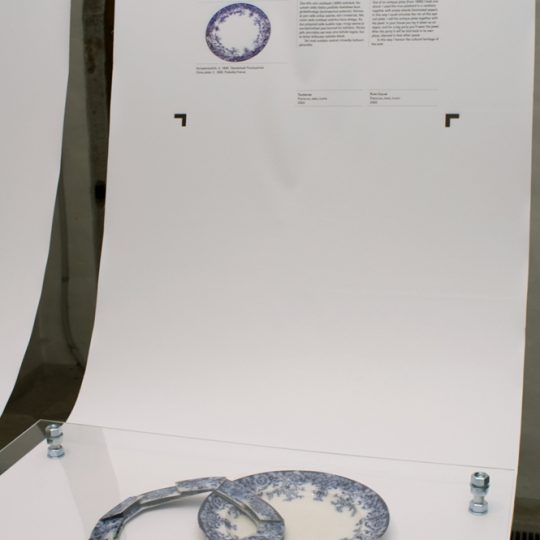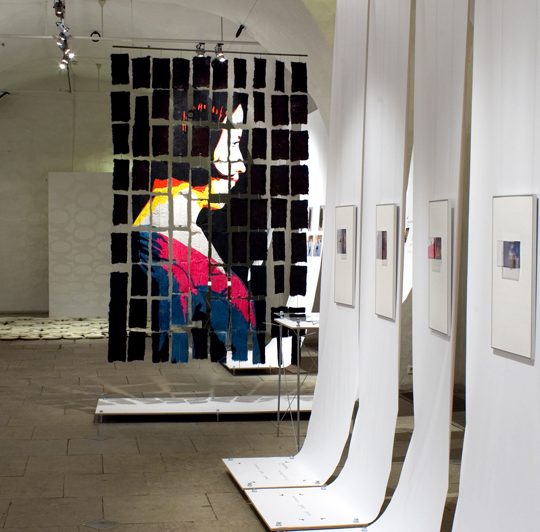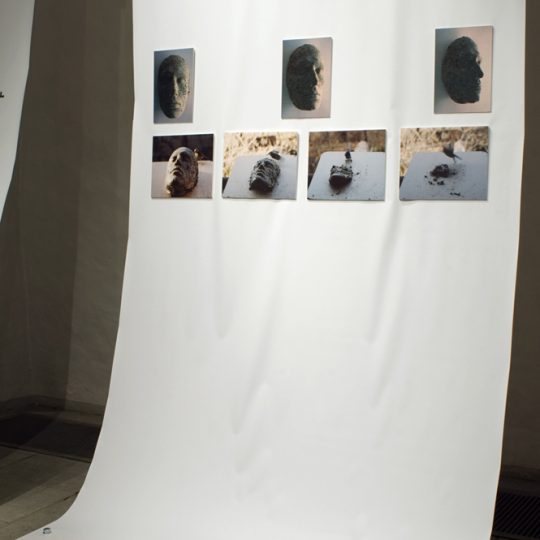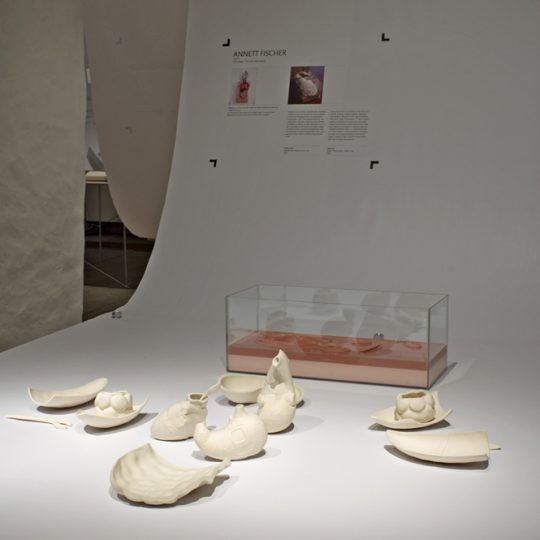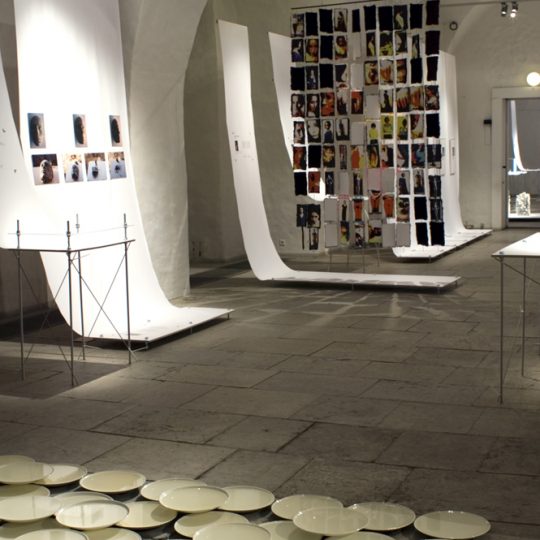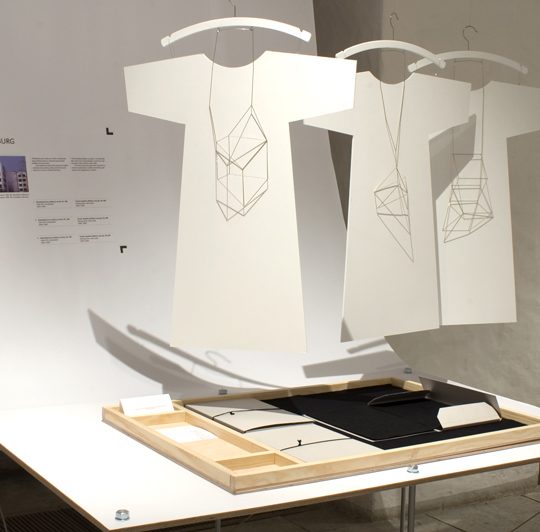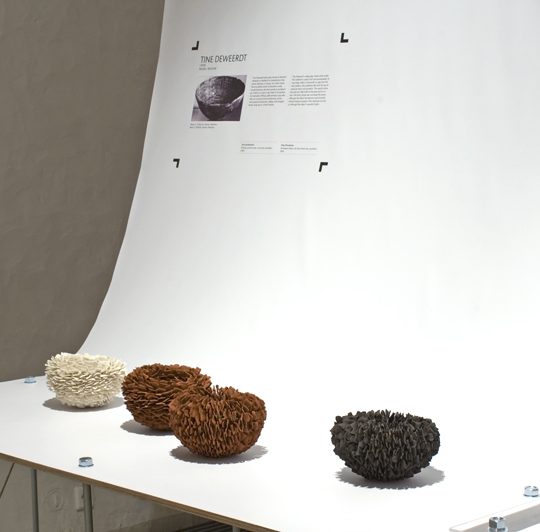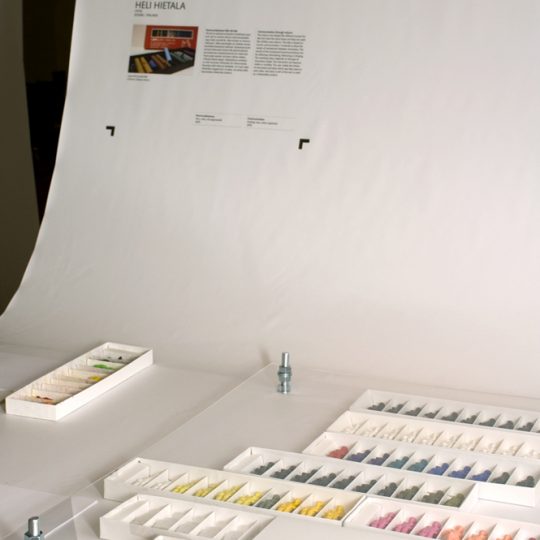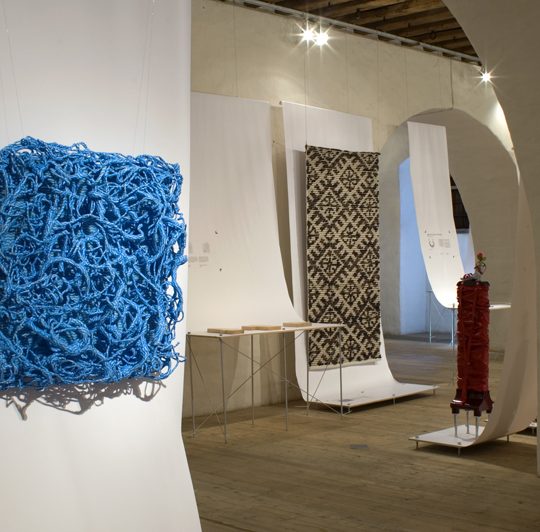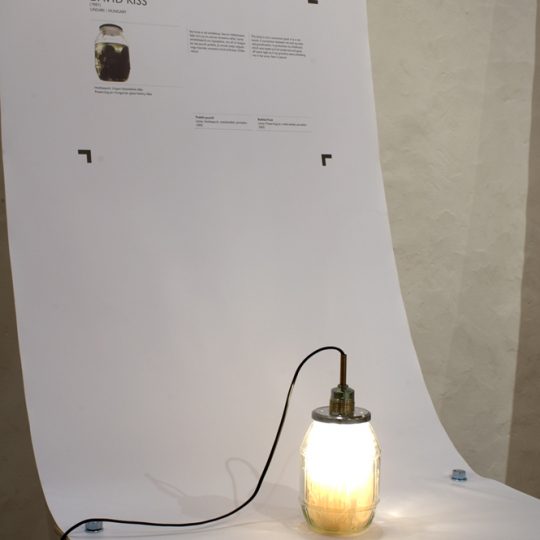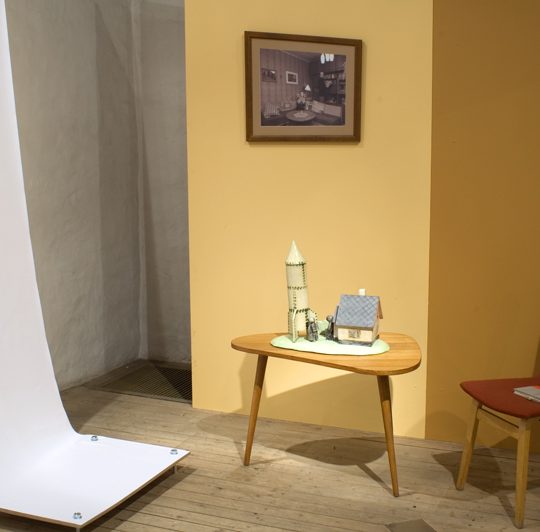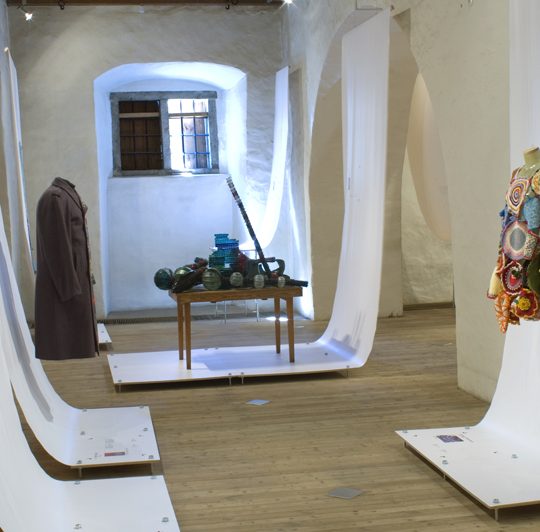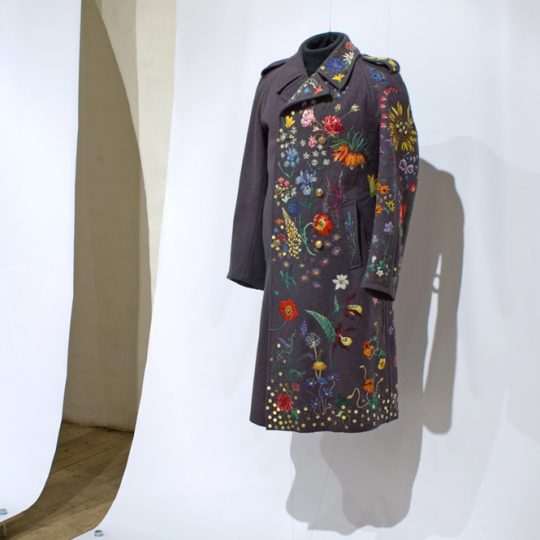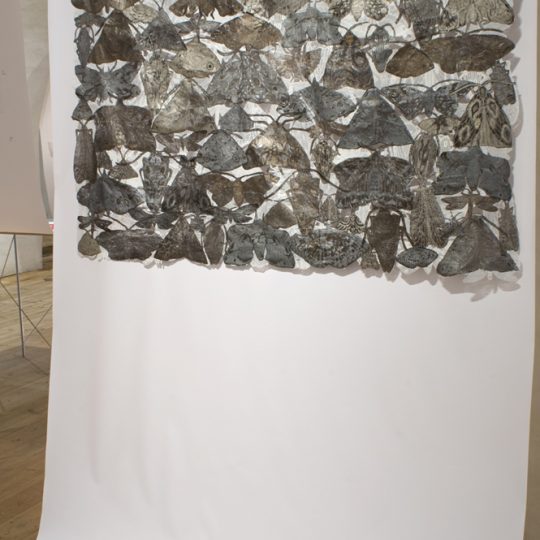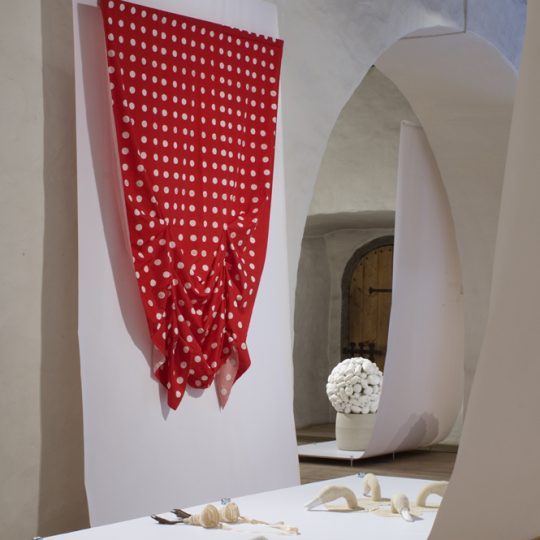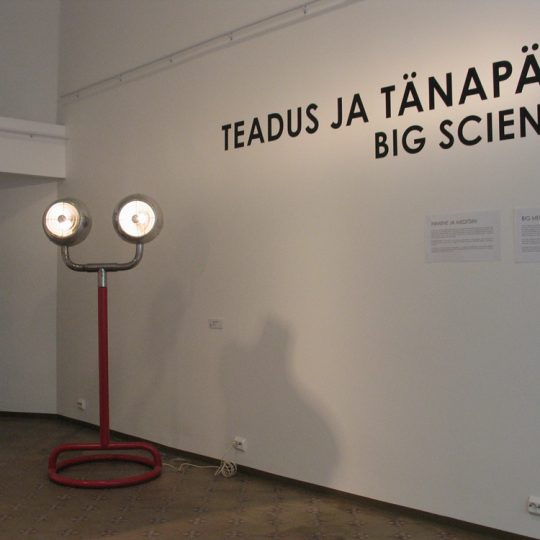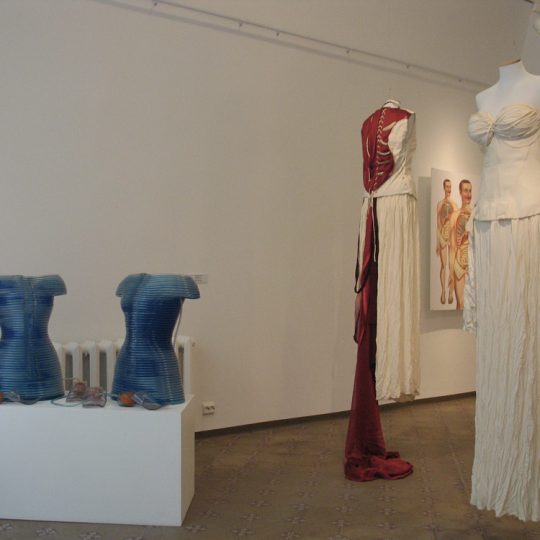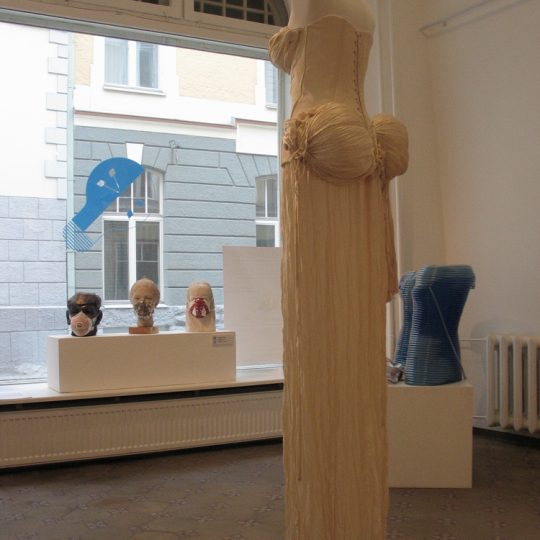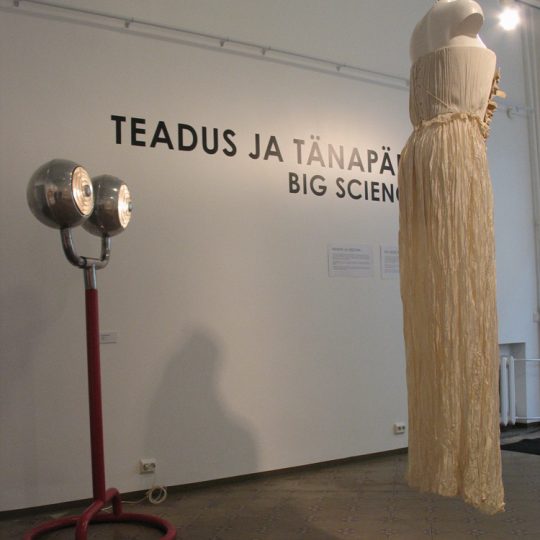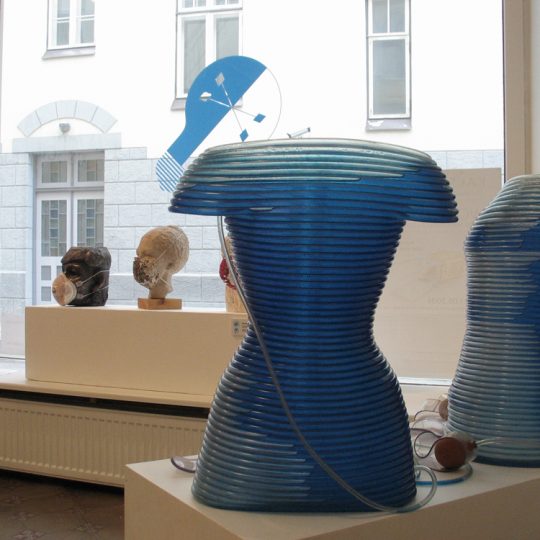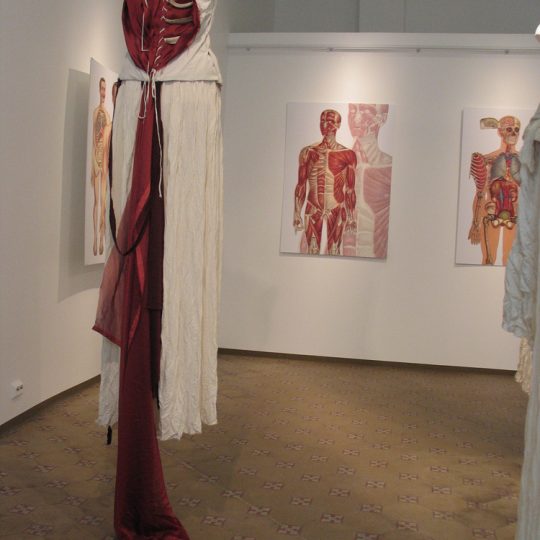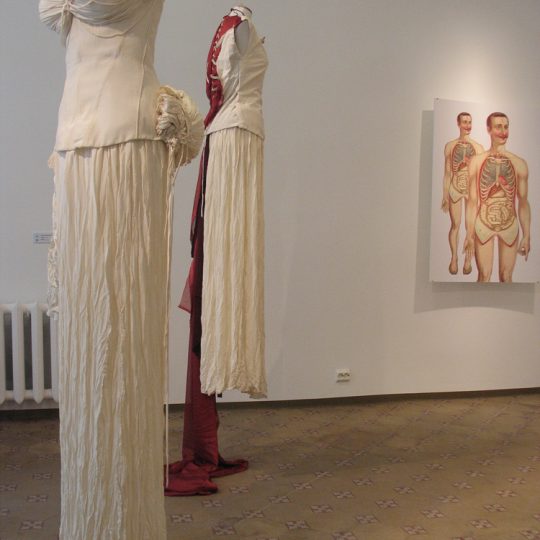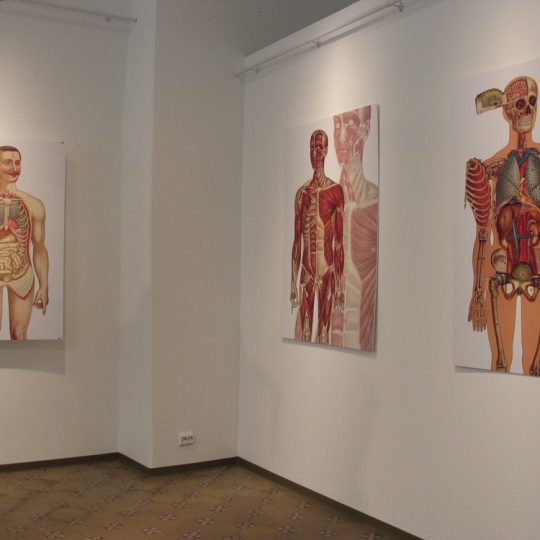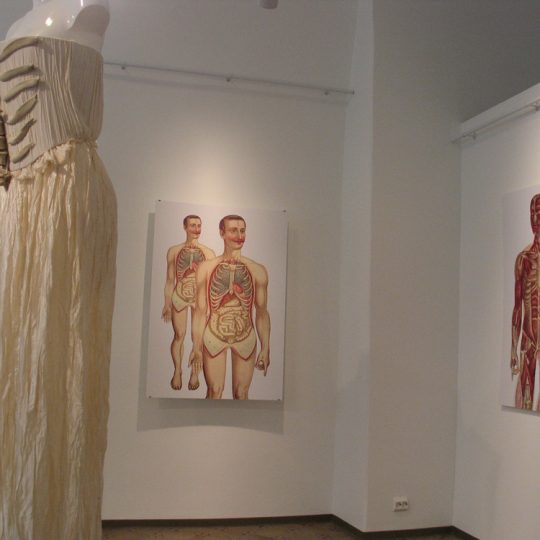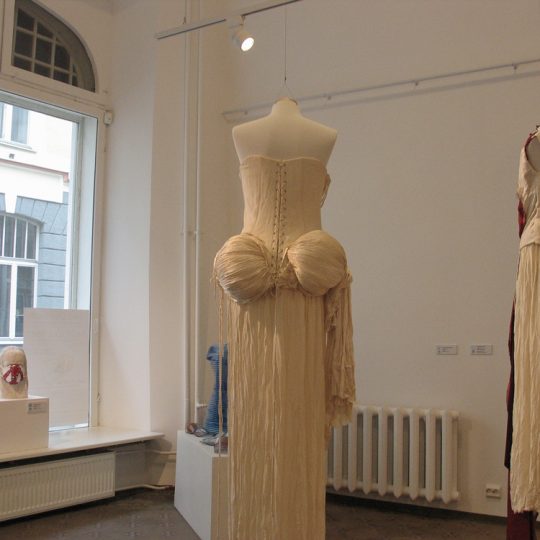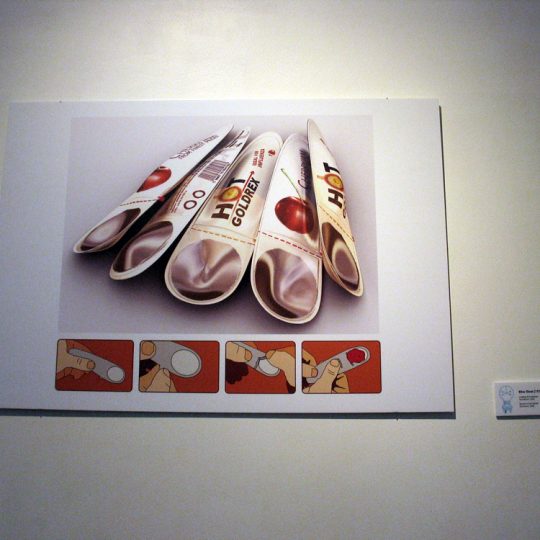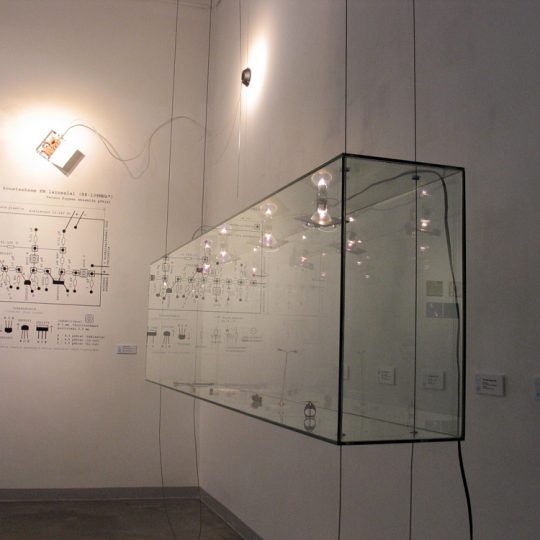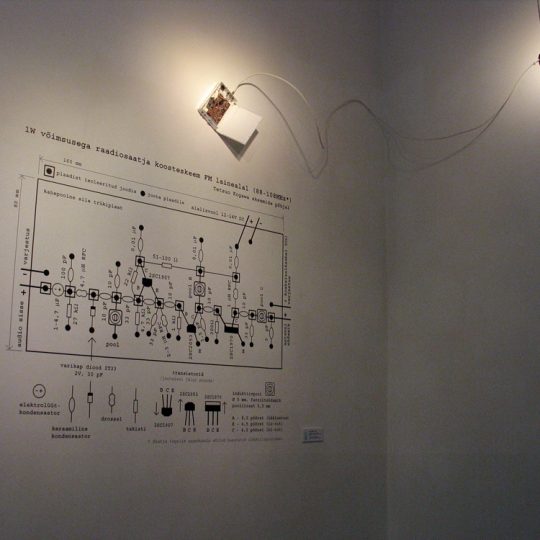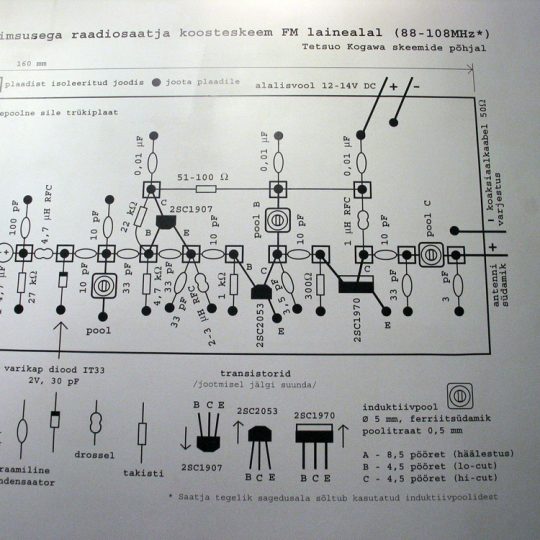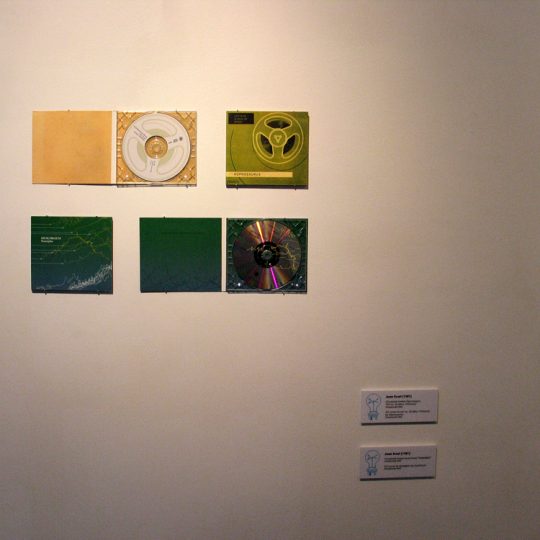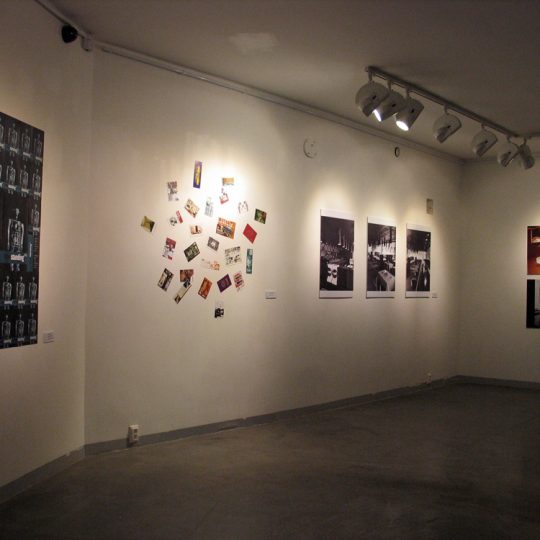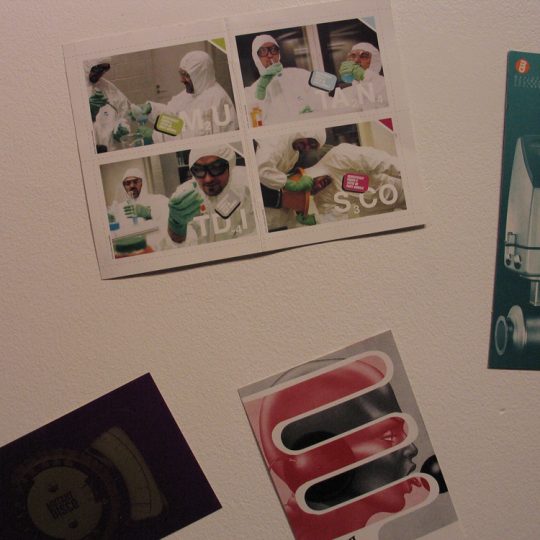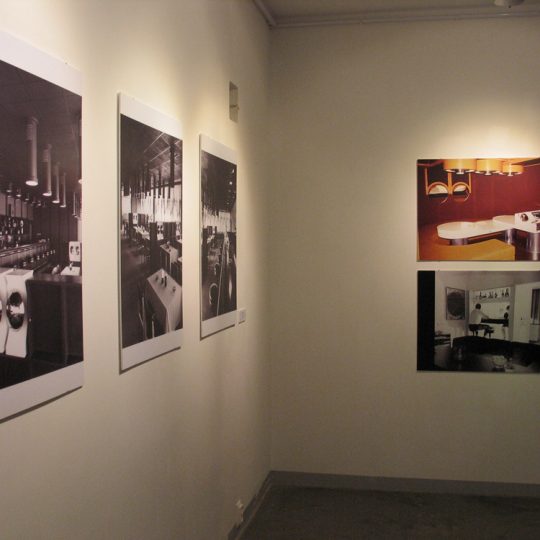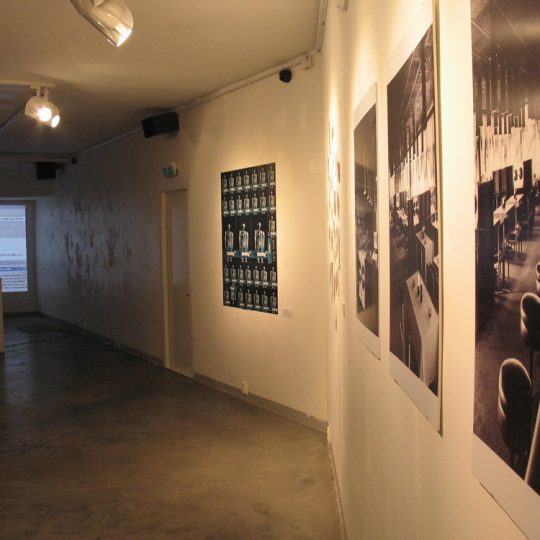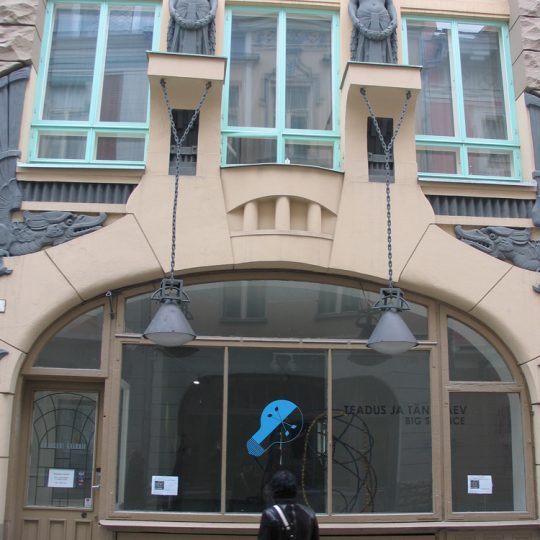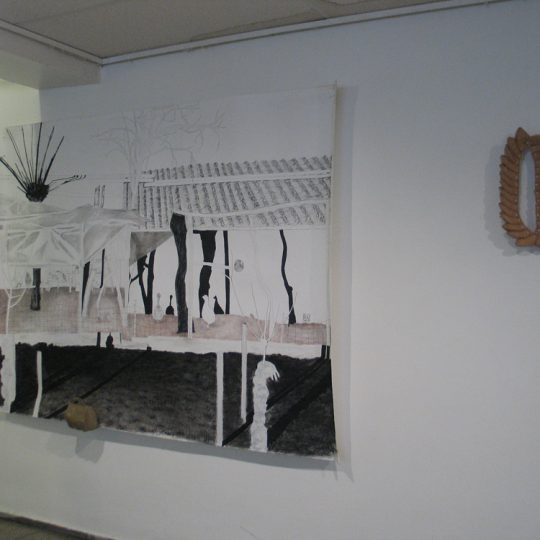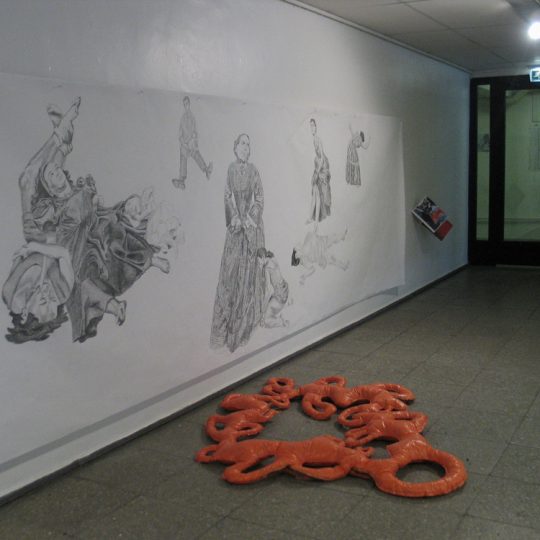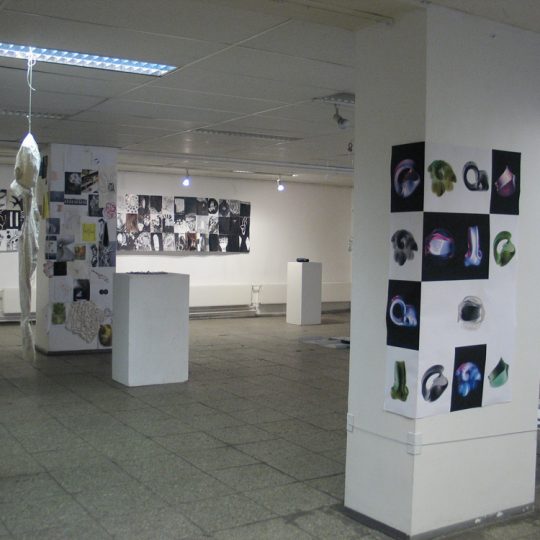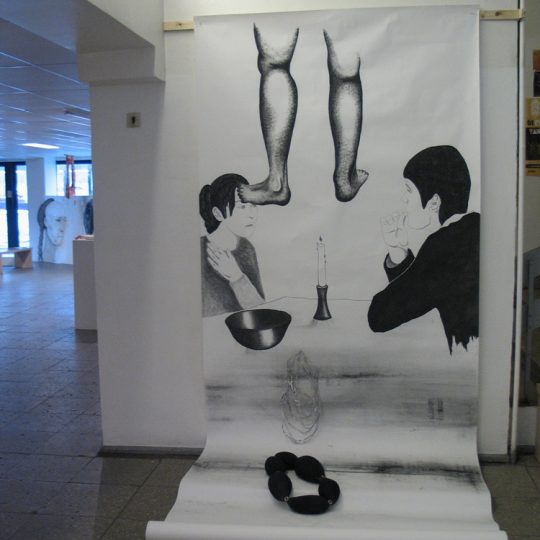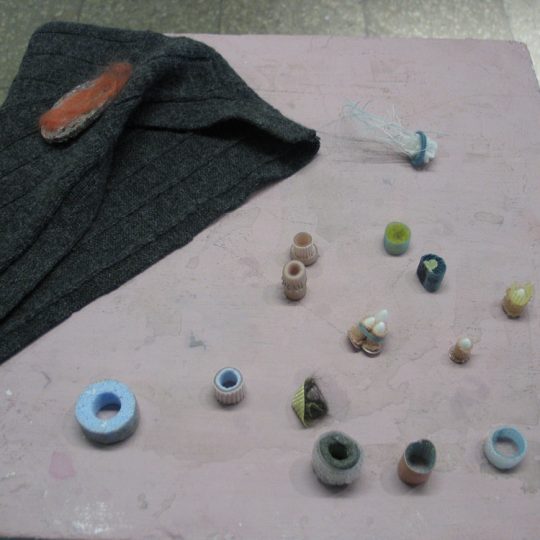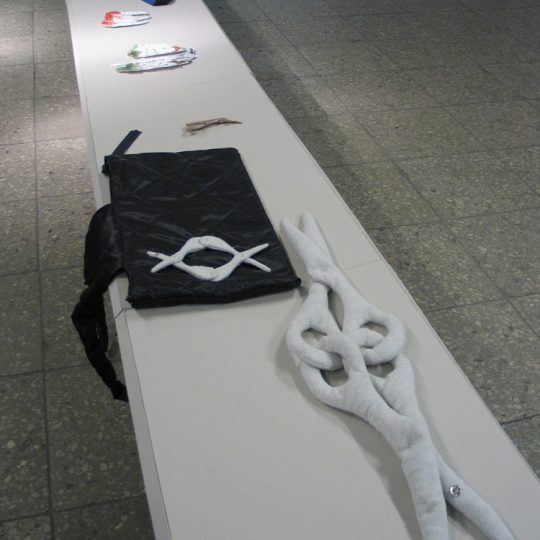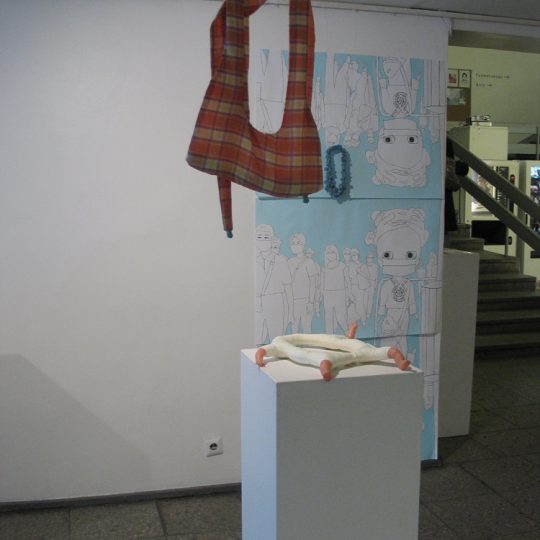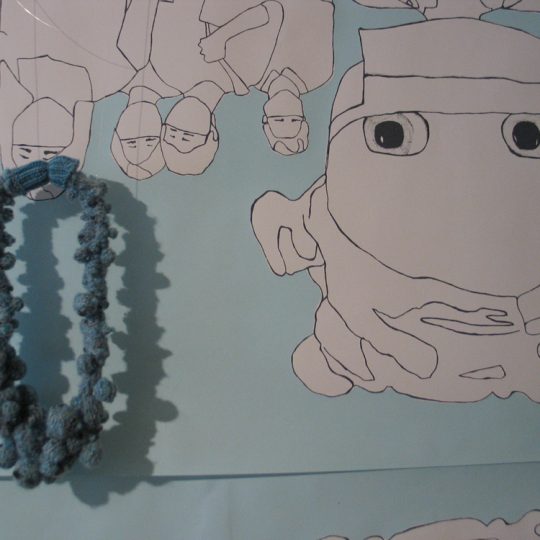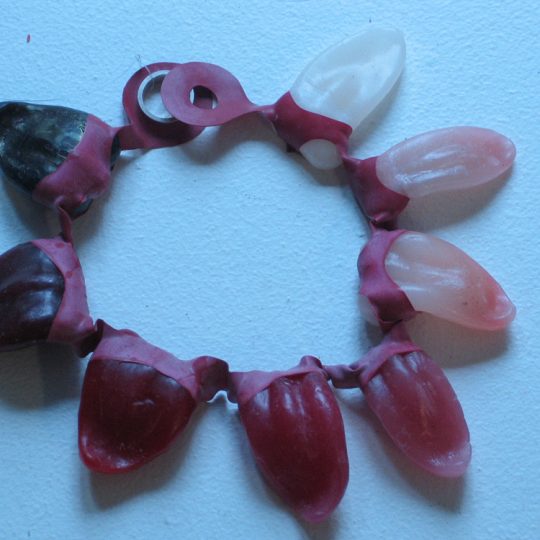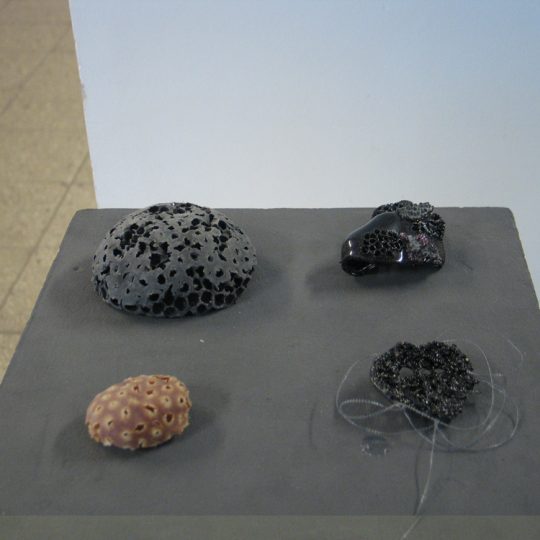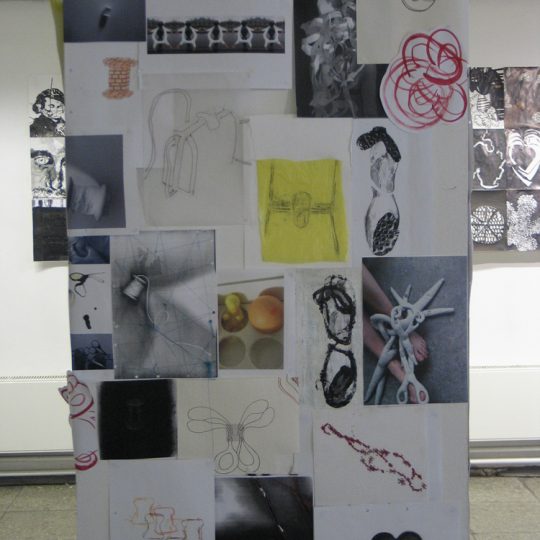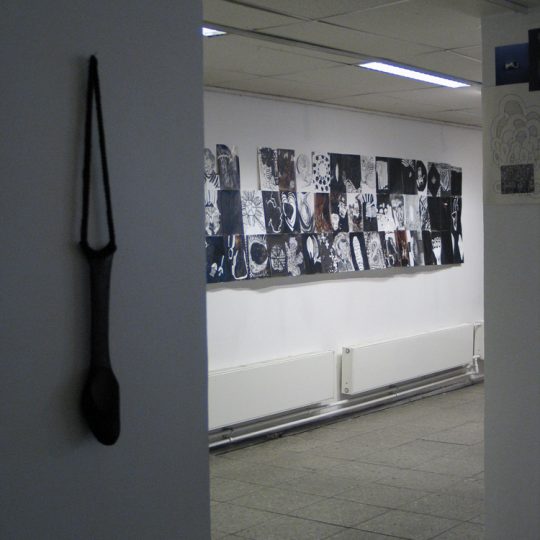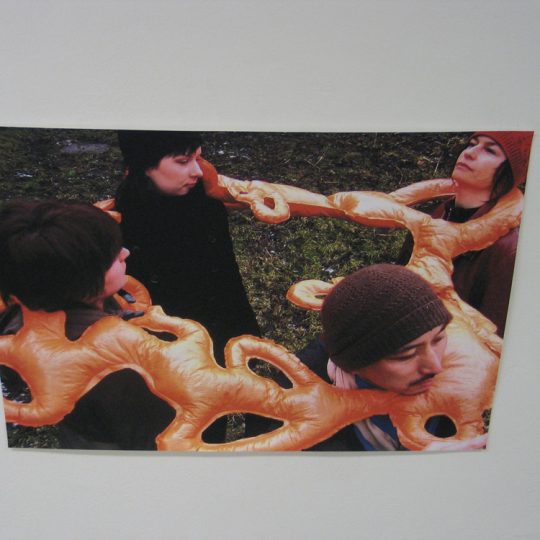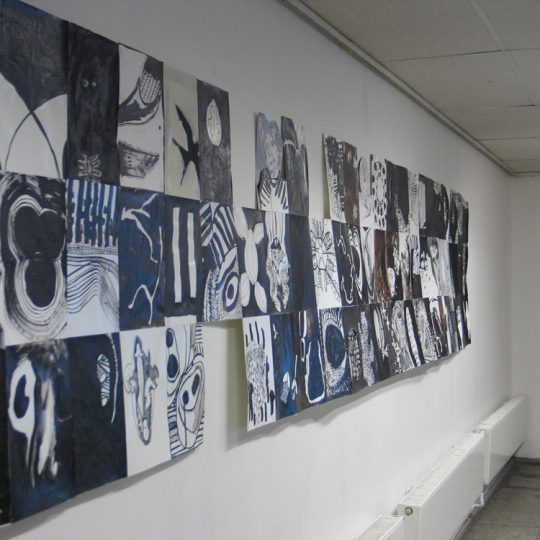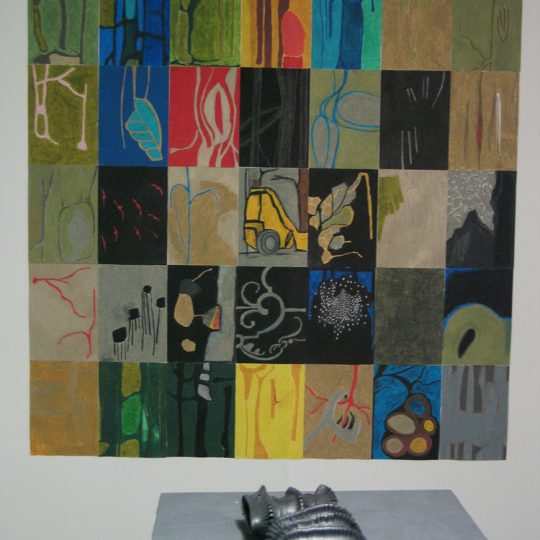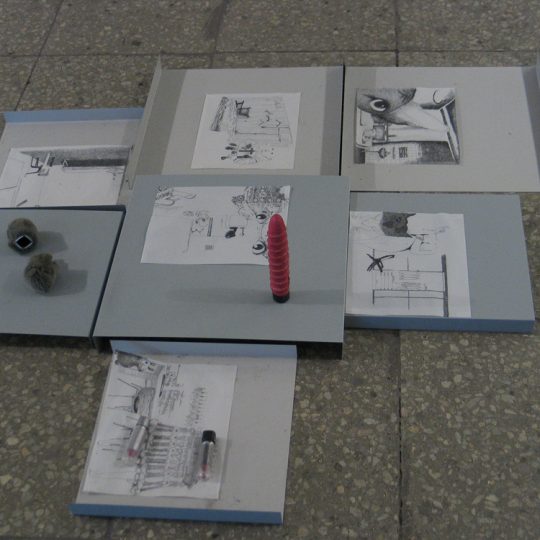„Two Close Ones“
Curatorial team: Ketli Tiitsar, Merike Alber, Elin Kard, Ülle Kõuts, Kai Lobjakas, Lennart Mänd, Ebe Nõmberg, Aigi Orav, Ele Praks, Tiina Sarapu (EST)
Exhibition design: 3+1 architects (Andres Ojari, Markus Kaasik ja Ilmar Valdur) (EST)
Special Guest: The English jewellery artist Wendy Ramshaw (1939) was invited to attend the triennial as the special guest; in the period of 1989-1998, she devised the collection “Picasso’s Ladies”, which consists of 66 jewellery pieces and was inspired by paintings of women by Pablo Picasso. It was an excellent opportunity to see the five pieces belonging to the collection in the main exhibition and to listen to, at the triennial seminar, the lecture by Wendy Ramshaw about the process of creating this collection.
Artists: Viivi Aavik (EST), Sayaka Abe (NLD), Ingrid Allik (EST), Katrin Amos (EST), Pálma Babos (HUN), Susanna Beloff (FIN), Caro Bärtling (NLD), Christine Candolin (FIN), Daina Dagnija (LVA), Tine Deweerdt (BEL), Indre Dirziene (LTU), Irmin Eggens (NLD), Jurgita Erminaitė (LTU), Suzanne Esser (NLD), Annett Fischer (NLD), Jantje Fleischhut (NLD), Hilde Foks (NLD), Māris M. Galis (LVA), Marta Gibiete (LVA), Elīna Gibiete (LVA), Zbyněk Havlin (CZE), Pavel Herynek (CZE), Heli Hietala (FIN), Leonor Hipólito (PRT), Kristína Hrončeková (SVK), Severija Inčirauskaitė-Kriaunevičienė (LTU), Nebojsa Joksimovic (Serbia & Montenegro), Liisi Junolainen (EST), Anni Kagovere (EST), Tiina Kaljuste (EST), Dávid Kiss (HUN), Renate Korinek (AUT), Bettina Simone Kreb (NLD), Marie-Louise Kristensen (DNK), Ieva Krumina (LVA), Erik Kuiper (NLD), Mervi Kurvinen (FIN), Urve Küttner (EST), Kersti Laanmaa (EST), Kristiina Laurits (EST), Krista Leesi (EST), Skaidrīte Leimane (LVA), A.S. Lemburg (DEU), Aira Lesina (LVA), Outi Liusvaara (FIN), Ave Maser (EST), Hansjörg Merkle (DEU), MUKI (Kersti Laanmaa & Tiit Rammul) (EST), Marko Mäetamm & Kaido Ole (EST), Evert Nijland (NLD), Carla Nuis (NLD), Kati Nulpponen (FIN), Maria Nuutinen (FIN), Aet Ollisaar (EST), Kristi Paap (EST), Ene Pars (EST), Andreja Petraković (Serbia & Montenegro), Jurate Petruskeviciene (LTU), Karol Pichler (FRA), Rait Prääts (EST), Tiina Puhkan (EST), Jaana Päeva (EST), Kadri Pärnamets (EST), Lija Rage (LVA), Tiina Rajakallio (FIN), Uli Rapp (NLD), Ainārs Rimicāns (LVA), Shelly Roichman (NLD), Mare Saare (EST), Kai Saarepuu (EST), Biruté Sarapiené (LTU), Susanne Schmitt (DEU), Constanze Schreiber (NLD), Kärt Summatavet (EST), Johanna Suonpää (FIN), Merle Suurkask & Einike Soosaar (EST), Martina Zwölfer (AUT), Anneli Tammik (EST), Pavel Trnka (JPN), Spiridoula Iris Tsante (NLD), Hanna Tynkkynen (NLD), Kristiina Uslar (EST), Piret Valk (EST), Mecky Van den Brink (NLD), Rozemarijn Van der Molen (NLD), Machteld Van Joolingen (NLD), Tanel Veenre (EST), Truike Verdegaal (NLD), Hiltje Wijnia (NLD), Sandra Viňa (FIN)
2006 was the fourth time that the Tallinn Applied Art Triennial is an international event. Having developed from the applied art triennials of the Baltic states taking place in Tallinn since 1979, this art event today remains the only art forum in Europe that includes all fields of applied art and design without any geographical limitations. Notable interest in the triennial among the artists even in the three interim years has strengthened the organisers’ confidence in the need for such a series of art events. In 2003, the exhibition bucked the customary format by means of an exhibition based on the selections made by the award-winning artists from the 2000 triennial and a seminar that offered a retrospective and discussed the relationship of applied art and design during the previous triennials in Estonia. This time, the triennial allows a broad-based meditation on the roots of applied art and design, i.e., on the earlier traditions. Displaying a photo of the item that served as the source of inspiration next to the exhibited work will make viewing the exhibitions and leafing through the catalogue truly gripping.
All in all, there were 332 applications submitted by artists from 27 different countries. The jury of the triennial examined anonymously the entry applications submitted by 291 artists and selected more than 110 works by 92 artists from 15 countries to be displayed in the main exhibition of the triennial. In addition to the main exhibition two satellite exhibitoins took place “Big Science” and “Two Close Ones, Close To Everyday”, international seminar and artists’ presentations day were held. The catalogue covering the Triennal’s main exhibition and all the other events of the Triennial was published.
Laureates
Grand prix – group MUKI (Kersti Laanmaa, Tiit Rammul) (EST)
II Prize – Caro Bärtling (NLD)
II Prize – Piret Valk (EST)
Acquisition prize of Estonian Museum of Applied Art and Design – Kristiina Uslar (EST
Jury
Exhibition jury: Karin Paulus, Art critic and curator, art historian (EST), Martin Pärn, Estonian Academy of Arts, designer (EST), Tiina Sarapu, Tallinn Applied Art Triennial Society, glass artist (EST), Urmas Viik, Estonian Academy of Arts, artist (EST), Ketli Tiitsar, Tallinn Applied Art Triennial Society, jewellery artist (EST)
Prize jury: Lesley Jackson, Chairman of the jury, art critic, curator and design historian (GBR), Jaan Elken, Estonian Artists’ Association, artist (EST), Ele Praks, Tallinn Applied Art Triennial Society, artist and journalist (EST), Urmas Viik, Estonian Academy of Arts, artist (EST), Kai Lobjakas, Tallinn Applied Art Triennial Society, art historian (EST)
“Big Science”
17.03-03.04.2006 Hobusepea Gallery
17.03-01.04.2006 Draakoni Gallery
Curators: Anneli Porri, Pille-Triin Männik
Sound on venue: Kohvirecords
Exhibition design: Raul Keller
Artists: Eliisa Ehin, Leesi Erm, Jaan Evart, Helle Gans, Taevo Gans, Aadam Kaarma, Kerly Kaljuste, Anu Rajamäe, Raul Keller, Kärt Ojavee, Jaanus Orgussaar, Rudolf Pangsepp, Martin Pedanik, Julia-Maria Pihlak, Maiu Rõõmus, Peeter Talvistu, Riho Tiivel, Ruudi Treu, Maria Valdma, Tõnis Vint
If you have been holding the thought from somewhere in the 1960s or 70s that science will save the world, then you should know you are wrong. It will not. Quite the opposite – instead of science becoming the ultimate world conquering tool, we have understood through science how little we really know and what a disaster awaits us in the very near future. Despite the fact that the seemingly at reach solution keeps escaping us, science remains to be popular and well funded.
Why science and the applied arts? Probably because ideally both science and the applied arts have a practical nature. Also probably because of hope that science will help to treat objects in a more economic way, improve the production methods and reduce the production expenses and to introduce more universal ways of use. Because of hope that commodity items’ close connection to science will help to postpone the eco-disaster, will fix some scientific facts in our knowledge base and will keep personal space from overflowing with functionless junk. Over-digitalized and software-rich IT-active applied arts are doing the latter already.
Science will not save even design even though any visual material derived from science is a never-ending source of inspiration. This is not designing for science, but using the products of science for designing purposes: masking, intimating and camouflage. Countless shapes and forms can be drawn from scientific language indefinitely, of which only a fraction will keep their original content. The rest is based on pure analogy, generalisation and the appeal for credibility.
Design acts in that manner in the times of the modernist progress enthusiasm and cold war propaganda as well within as eschatological and fragmented postmodernist view of the world. Only during the former period it relies on science in true belief and during the latter period the connection is more of an act. In one case the innovation of thinking and technology is propagated to the widest audiences; in the other case – in the time of impenetrable digital age – science is used to remind us of our childhood and of the times of simpler innocent systems. In the first case a compact reliable whole is being built, in the other case the end-user is left alone with their ever-absorbing fears.
“Two Close Ones, Close To Everyday”
16.03–29.03.2006 Estonian Academy of Arts Gallery
Authors and tutors of the project: Hilde De Decker, Evert Nijland, Ellert Haitjema, Erik Mattijssen, Pieter Elbers
Artists: Sayaka Abe (1981) (JPN), Lisette Colijn (1982) (NLD), Marieke van Diepen (1978) (NLD), Noémie Doge (1983) (CHE), Florie Dupont (1984) (FRA), Maaike Ebbinge (1982) (NLD), Shelly Gal (1976) (ISR), Bettina Kreb (1976) (DEU), Edgar Filipe Silva Mosa (1986) (PRT), Susana Perez Vogelpoel (1976) (ESP), Shelly Roichman (1981) (ISR), Kyu Hisashi Shibata (1972) (JPN), Iris Tsante (1978) (GRC), Ana Ugarkovic (1985) (HRV)
The Jewelry department of the Gerrit Rietveld Academie, Amsterdam, was greatly inspired by “Two Close Ones”; the 4th Tallinn Applied Art Triennial. The event became the stimulus for a program of technical workshops that ran in the first semester of the school year. The project was called “Metamorfose”. Students were asked to choose a special object and to analyze that in hundred drawings and collages. Then, through the introduction of a range of different technical skills they learned how to transform that object. The project is not only focused on the development of technical craft skills but also on developing each individual’s personal ideas and concepts. Fourteen students took part in the project – this is in fact all of the first and second year students.
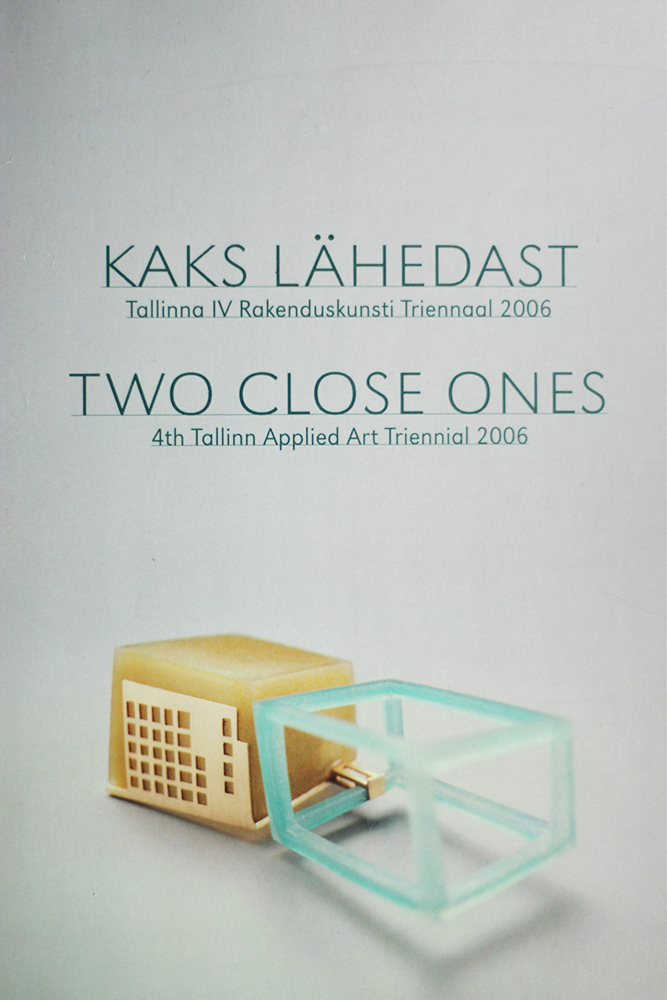
Catalogue
Compiled by Kristi Paap
Designed by Enno Piir, Raul Keller
Publisher: NGO Tallinn Applied Art Triennial Society
176 pages
ISBN 9949-13-486-2
Tallinn 2006

